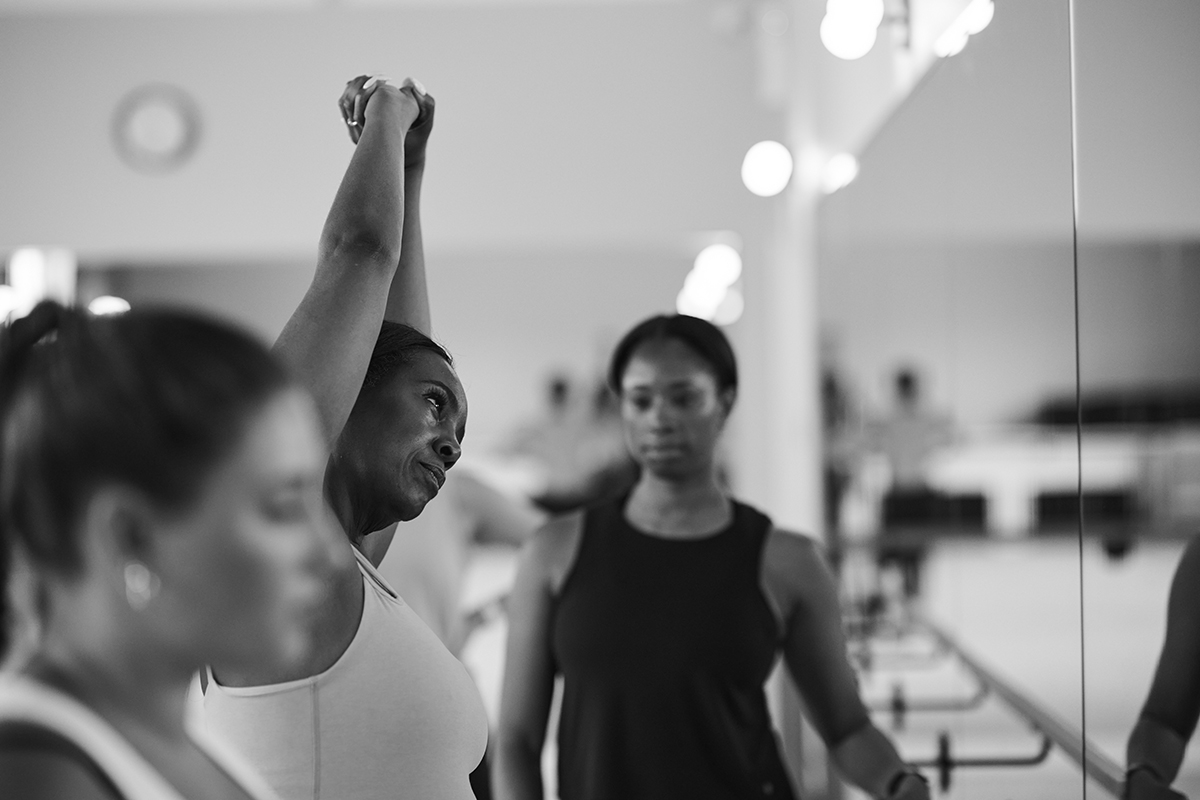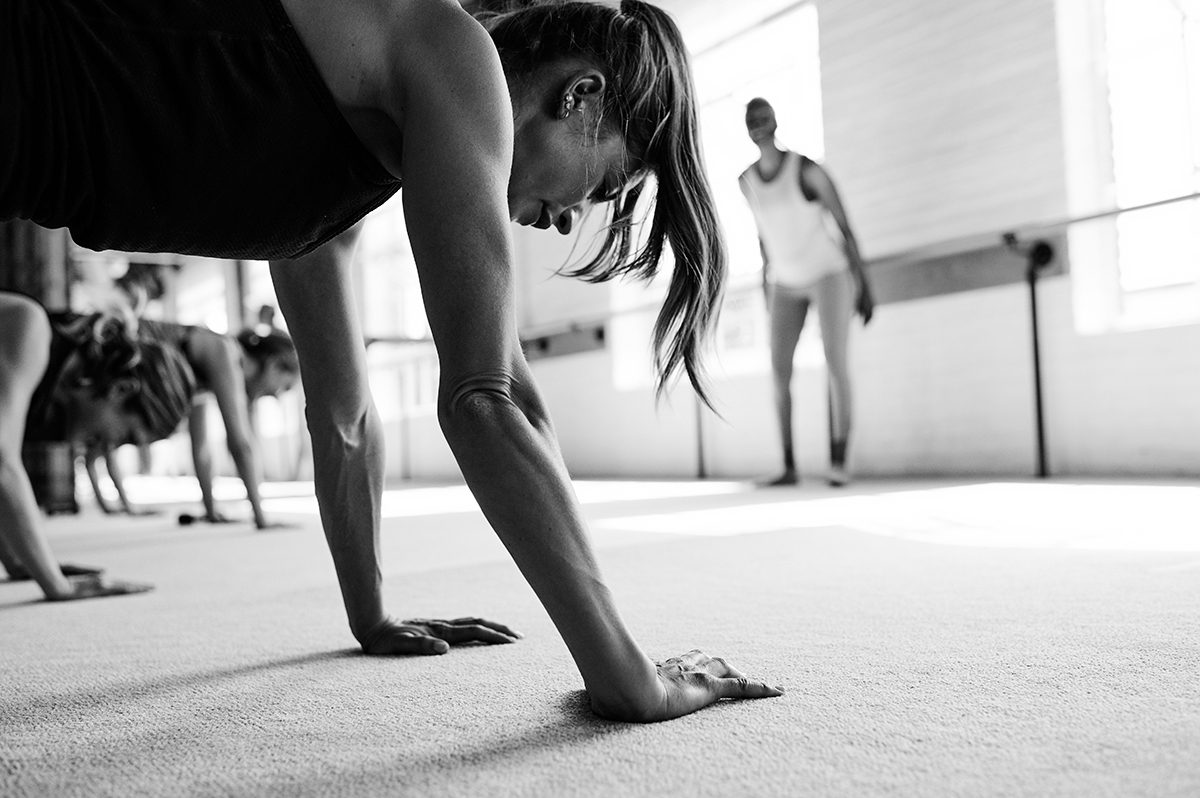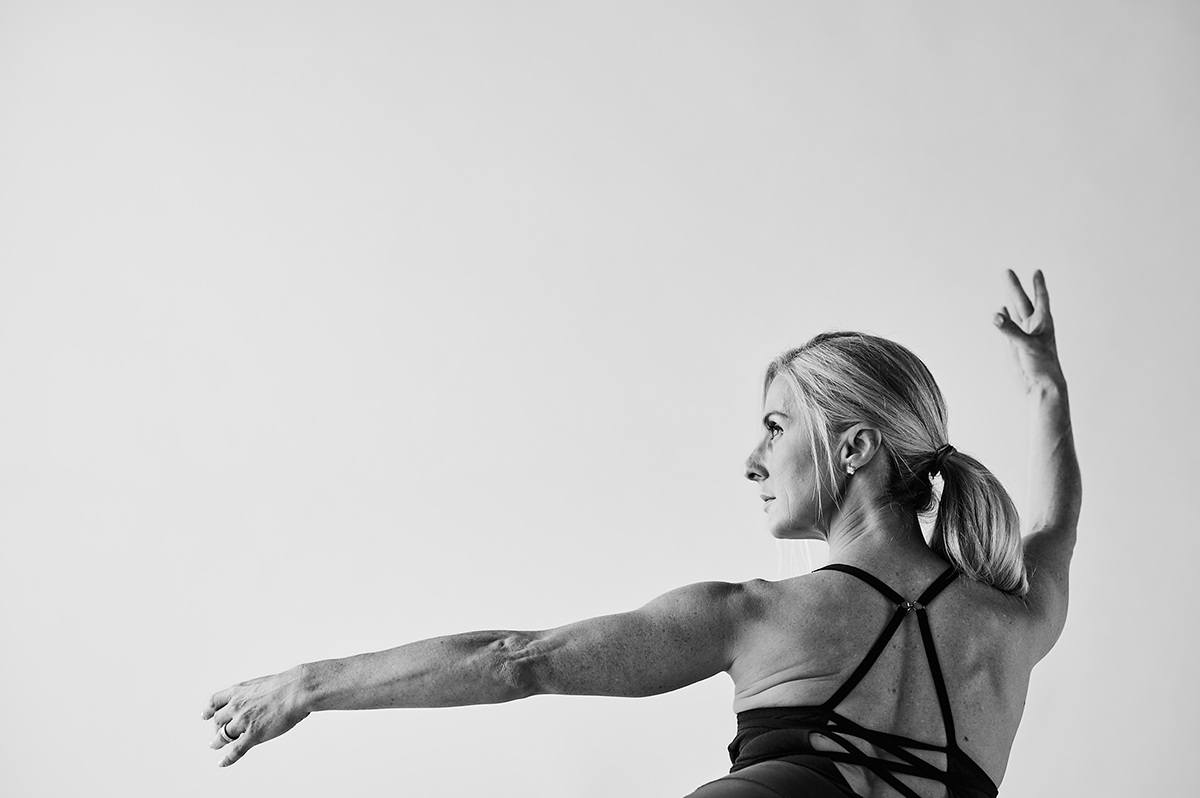New clients! For a limited time, Get 13 Classes for $78 (only $6 per class)
Ten Tips for Boosting Your Results from The Bar Method, Part 3
My tips last month on how to get the most out of the Bar Method’s “flat-back” exercise brought in a large number of comments and questions about this challenging exercise. Two of these emails brought up some interesting points that I’ll share with you later in this blog.
But first, here are tips #9 and #10 for boosting your results from the Bar Method, which are for the workout’s last two exercises, “back-dancing” and “final stretch.” Both of these sections are considerably less intense than those you do earlier in class, and might burn fewer calories than for example “thigh-work,” but they both have the power to make a major contribution to the way you look, move and feel.
Tip #9: Find your inner dancer during “back-dancing.”
Back-dancing teaches your body to move like a dancer. The next time you watch a ballroom dancing competition, notice how the dancers swing their lower torsos all over the place while keeping their upper torsos elegantly aligned with their partners’. Back-dancing gives you a head start on developing this same graceful fluidity in your torso by allowing you to rest your back on the floor. You can then focus on relaxing your lower back muscles, freeing your glutes and hamstrings to move your hips like a salsa dancer’s. Imagine you’re dancing, and stay with the tempo even when the song is fast. You’ll develop not only more tone in your rear, but also a more expressive and youthful spirit in way you move in general.
Tip #10: Go for the “stretch burn” during the final stretches.
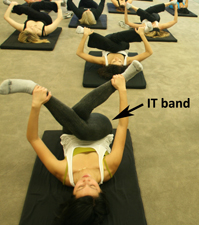 During the final section of class, give the stretches just enough energy to create a slight burning sensation in the muscles you’re stretching. When you assume the “butterfly stretch” for example, align your shins directly opposite your knees in a “T shape” so that you feel a “stretch burn” in the outsides of your upper legs (the location of your “IT band”). During the “strap stretch,” completely straighten the knee of the leg you’re stretching to fully extend your hamstrings, which reach across
During the final section of class, give the stretches just enough energy to create a slight burning sensation in the muscles you’re stretching. When you assume the “butterfly stretch” for example, align your shins directly opposite your knees in a “T shape” so that you feel a “stretch burn” in the outsides of your upper legs (the location of your “IT band”). During the “strap stretch,” completely straighten the knee of the leg you’re stretching to fully extend your hamstrings, which reach across 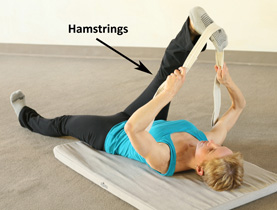 the back of your knee. The burn you feel when you do find the “edge” of your range of motion for these stretches is a sign that you’re now going beyond simply stretching a muscle. You’re also strengthening it and enhancing its fine motor skills (see my blog: “Stretching Makes You Stronger, And More”). Be mindful, patient and gentle with your body when you stretch. At the same time, supply enough power to the stretches to tap into these additional benefits that stretching can give you. By keeping your focus on gaining benefits from your workout, even in this last part of class, you’ll gain a leaner shape, a more graceful bearing, and control over a greater range of motion. Your back will feel better, you’ll feel more youthful, and you’ll move more effortlessly. Don’t miss out on this last chance to change your body!
the back of your knee. The burn you feel when you do find the “edge” of your range of motion for these stretches is a sign that you’re now going beyond simply stretching a muscle. You’re also strengthening it and enhancing its fine motor skills (see my blog: “Stretching Makes You Stronger, And More”). Be mindful, patient and gentle with your body when you stretch. At the same time, supply enough power to the stretches to tap into these additional benefits that stretching can give you. By keeping your focus on gaining benefits from your workout, even in this last part of class, you’ll gain a leaner shape, a more graceful bearing, and control over a greater range of motion. Your back will feel better, you’ll feel more youthful, and you’ll move more effortlessly. Don’t miss out on this last chance to change your body!
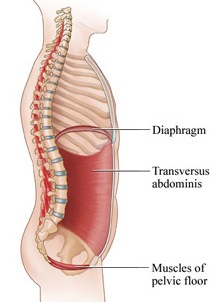 The first noteworthy comment on last month’s tips was from Lizzie, a knowledgeable reader who pointed out several inaccuracies in my explanations about how flat-back works. “Just to clarify,” she wrote, “the diaphragm contracts on an inhale, not an exhale.” I double-checked this correction with the Bar Method’s medical consultants, Physical Therapists Cayce and Wendy, and they confirmed that Lizzie is right. Our diaphragm relaxes rather than contracts when we exhale. If we exhale forcefully however, our abdominals kick in to press the air out of our lungs by sharply pulling in our belly. The specific ab muscle that is most responsible for this pulling-in is our deepest one, our “transversus abdominis.” When you exhale sharply during flat-back — as well as during round-back and curl — you’re working and toning this deep ab muscle. You can make the contraction even more effective by consciously pulling in your abs with each exhalation.
The first noteworthy comment on last month’s tips was from Lizzie, a knowledgeable reader who pointed out several inaccuracies in my explanations about how flat-back works. “Just to clarify,” she wrote, “the diaphragm contracts on an inhale, not an exhale.” I double-checked this correction with the Bar Method’s medical consultants, Physical Therapists Cayce and Wendy, and they confirmed that Lizzie is right. Our diaphragm relaxes rather than contracts when we exhale. If we exhale forcefully however, our abdominals kick in to press the air out of our lungs by sharply pulling in our belly. The specific ab muscle that is most responsible for this pulling-in is our deepest one, our “transversus abdominis.” When you exhale sharply during flat-back — as well as during round-back and curl — you’re working and toning this deep ab muscle. You can make the contraction even more effective by consciously pulling in your abs with each exhalation.
Lizzie also set me right about which muscle is responsible for students’ abs “pooching” during flat-back. If your abs pop out when you attempt to lift both legs, the weakness, she said, is in that same deep ab muscle, the “TA.”
Both Lizzie and my PT consults agree with me however on the best strategy for achieving flatter abs during flat-back: Exhale sharply and pull in as much as you can on every rep, even if your abs pooch out a little. You will incrementally strengthen your “TA” until it becomes able to hold your stomach in when you raise your legs.
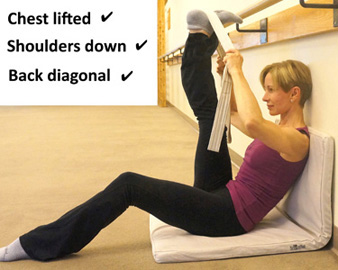 The second of the two emails I received was from Maria, who wanted advice on an exercise she struggles with called “round-back,” which students do right before flat-back in the studio-based workout. “Hoping you’ll have some suggestions for round back and how to improve form,” she wrote me. “I’m finding even after two years of practice that I feel this more in my hip flexors than in my quads.”
The second of the two emails I received was from Maria, who wanted advice on an exercise she struggles with called “round-back,” which students do right before flat-back in the studio-based workout. “Hoping you’ll have some suggestions for round back and how to improve form,” she wrote me. “I’m finding even after two years of practice that I feel this more in my hip flexors than in my quads.”
Round-back is one of my favorite exercises because it gives students’ back muscles a needed stretch after they’ve held their spines straight for most of the first half of class. Round-back also stretches the glutes and hamstrings after the preceding “seat-work.” As for strengthening, round-back tones the quads and flattens the abs. That’s a lot of benefits from one exercise, but good positioning is key to reaping those benefits. To help Maria and students like her to do round-back comfortably and to best effect, I’d like to offer a few tips on comfortably and effectively performing this multi-faceted exercise.
First, lean on the wall so that your torso is at a 45 degree angle, or diagonal, to the floor. If you sit too high, you will over-flex your hips and be unable to contract your abs. If you sit too low, you’ll overly round your back.
Second, lift your chest so that your back is almost straight (the “round” in “round-back” is slight). Then press your navel downwards. Think of the shape of your back as similar to how you position it for “high curl,” except that during round-back you’re stretching your glutes rather than gripping them.
Third, pull in your abs with every rep! Like “flat-back,” this exercise requires you to forcefully exhale in order to recruit and flatten your deep abs.
Last but not least, if you have sensitive hip-flexors, hold onto your working leg the whole time! If it’s difficult for you to reach your leg, loop a strap over your arch, as illustrated above. Don’t worry about missing out on the results by taking these options. Challenge yourself to completely straighten your working knee during the straight-leg moves while maintaining good form, and you may even begin to enjoy round-back as much as I do.

